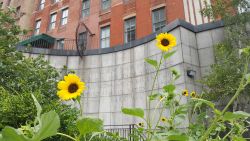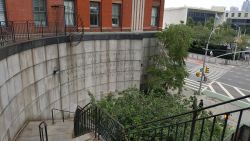Ralph Bunche Park
Ralph Bunche Park
This oasis opposite the United Nations honors a titan of 20th century diplomacy. It was named in 1979 for Ralph Johnson Bunche (1904-1971), an American educator, political scientist, and United Nations mediator. The son of a barber and grandson of a former slave, Bunche was born in Detroit, Michigan. He graduated from Jefferson High School in Los Angeles and in 1927 from the University of California at Los Angeles, where he was valedictorian and a star athlete. Bunche received an M.A. in political science (1928) and a Ph.D. (1934) at Harvard University. He did postdoctoral research in anthropology at Northwestern University, the London School of Economics, and Capetown University in South Africa. From 1928 to 1950 Bunche served on the faculty of Howard University, where he established and chaired its political science department. He wrote A World View of Race (1936), and also collaborated with Swedish sociologist Gunnar Myrdal on a study of blacks in America titled An American Dilemma (1944).
During World War II Bunche served as chief research analyst of the Africa section of the Office of Strategic Services (1941-44). He then worked for the State Department from 1944 to 1947. In 1947 Bunche joined the United Nations Secretariat. After the assassination in September 1948 of Count Folke Bernadotte, the UN mediator in Palestine, the Security Council appointed Bunche to succeed him. From January through July 1949 Bunche successfully brokered the armistice agreements between Israel and the Arab states; for his efforts he was accorded a ticker-tape parade up Broadway in New York City. He was awarded the Nobel Peace Prize in 1950, the first African-American to receive this celebrated award.
From 1950 to 1952 Bunche taught at Harvard University. Other appointments in the field of education included his service as a member of the New York City Board of Education, Board of Overseers of Harvard University, and Board of the Institute of International Education, as well as a trustee of Oberlin College, Lincoln University, and the New Lincoln School.
In 1955 Bunche was appointed undersecretary of the United Nations, and in 1957 secretary for special political affairs. In 1956 he was civilian supervisor of the UN peacekeeping forces in the Suez area. In 1960 he was part of a UN peacekeeping effort in the Congo, and in 1964 he helped to mediate differences between the Greeks, Cypriots, and Turks. For a lifetime of extraordinary achievement in the international arena, he was awarded the United States Medal of Freedom by President John F. Kennedy in 1963. One year after he retired from the UN in 1970, he died in New York City.
This property is one of several in the Turtle Bay neighborhood acquired by the City of New York in 1948 in connection with the widening of First Avenue. In addition to the London Plane and locust trees, the park is distinguished by four monuments. Peace Form One at the north end is a 50-foot high stainless steel shaft by Daniel Larue Johnson dedicated in 1980. This latter-day obelisk is an homage to Bunche, who was a personal friend of the sculptor. The northwest granite staircase was designed around 1948 by the architectural firm of Andrews & Clark and inscribed in 1975 with a passage from the Book of Isaiah: "they shall beat their swords into plowshares." In 1981 the City Council named the western steps after Russian dissident Anatoly Sharansky. At the southern end of the park a commemorative plaque to civil rights crusader Bayard Rustin (1912-1987) was dedicated by former Mayor Edward I. Koch on January 23, 1990.
On August 14, 1985 Mayor Koch joined community leaders, dignitaries from the United Nations, and the widow of Ralph Bunche, to designate this area as New York City's first peace park. The designation was part of a worldwide effort by Ploughshares, a peace organization and by Architects, Planners and Designers for Social responsibility. The park, a place of public assembly and dissent, across from the United Nations, is the historical site of many demonstrations and protests against political oppression. It embodies in many ways the principles of human understanding and freedom of expression.
Check out your park's Vital Signs
Clean & Safe
Green & Resilient
Empowered & Engaged Users
Share your feedback or learn more about how this park is part of a
Vital Park System








